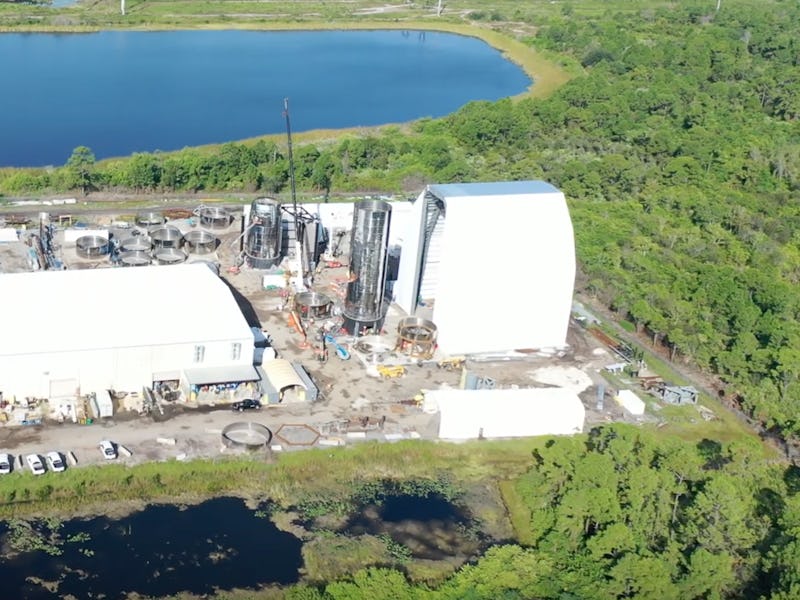Starship: SpaceX aerial footage shows Mars-bound ship is approaching fast
SpaceX's big rocket is coming to life.

Starship, SpaceX’s rocket designed to send humans to Mars, has hit the ground running.
After CEO Elon Musk unveiled the first prototype of the ship at a presentation on September 28, aerial footage shows work is well underway on new iterations of the ship. YouTuber and former commercial pilot John Winkopp shared aerial footage on Friday of the Cocoa facility at Cape Canaveral in Florida. The video, captured on October 17, shows work has started on a second Starship at the facility.
The project is a major step in SpaceX’s history. The fully-reusable Starship is designed to carry up to 100 people into space at once, a vehicle described by venture capitalist Rick Tumlinson as a “Mayflower-class” ship. SpaceX plans to use it to send a satellite into space in 2021, send a team of artists around the moon by 2023, and establish a city on Mars as early as 2050.
This schedule requires a fast-paced development time. SpaceX has tested the Raptor engine, a liquid oxygen and methane-fueled machine, using a miniaturized version of the Starship called the “Starhopper.” In August, it successfully flew 150 meters into the air.
But Musk and SpaceX want to go further, faster. The next goal is to fly one of the full-size Starship prototypes 20 kilometers into the air, before completing an orbital test flight. The timeline is tight, and SpaceX’s two facilities are expected to produce more Starships at speed.
Watch Winkopp’s footage below:
Compare it to footage captured just six days prior, and you’ll see how quickly progress is coming together on the ship:
SpaceX Starship: what’s planned to come next
SpaceX has spent most of this year building the Starship Mk.1 at its Boca Chica facility in Texas.
In May 2019, it was revealed that a second team was also working on a second Starship at the Cape Canaveral facility in Florida. The plan, it emerged, is to pit both teams in a race to build Starships and to learn from each other.
“Both sites will make many Starships,” Musk wrote on his Twitter page at the time. “This is a competition to see which location is most effective. Answer might be both.”
At a September event at the Boca Chica facility, Musk revealed the completed Mk.1 ship. During the same event, he noted that work would start within a month on the Mk.3 ship at Boca Chica. This was expected to be the first ship to improve the manufacturing process to make it thinner and lighter, taking steel coils directly from the mill and shifting the curvature to reach the required nine meters.
Musk, standing underneath Starship Mk.1.
SpaceX plans to use the Mk.1 to hold a 20-kilometer flight sometime before the end of the year. From there, the goal is to hold an orbital flight. During the September event, Musk suggested that the Mk.3, Mk.4 or Mk.5 could all prove suitable candidates for the orbital flight.
But the ship is just one part of the equation. The Super Heavy is the first-stage booster designed to lift the ship out of Earth’s gravity. Where the Starship will use six Raptor engines, the Super Heavy can hold up to 37. Booster production is expected to start after the Mk.4 is built.
Both Florida and Texas will continue to produce ships and start producing boosters. Musk claimed at the September event that “a whole stack of them” should emerge, as they will be building “as fast as we can.” By the first quarter of 2020, SpaceX is also expected to produce one Raptor engine every day.
Although it may seem like a rapid speed, it’s perhaps worth bearing in mind that for the first manned mission to Mars alone, SpaceX envisions sending six Starships packed with the necessary cargo.